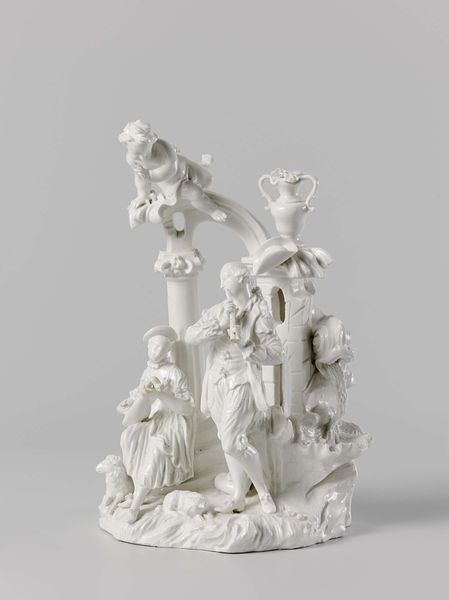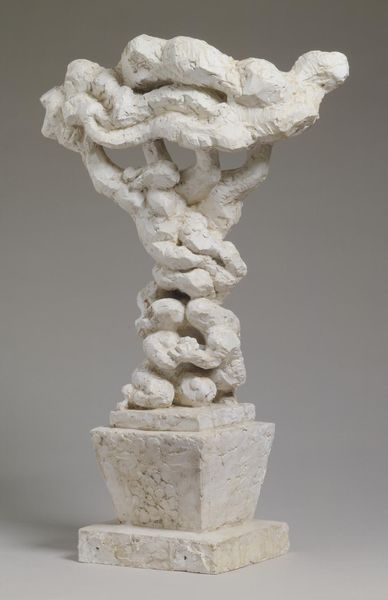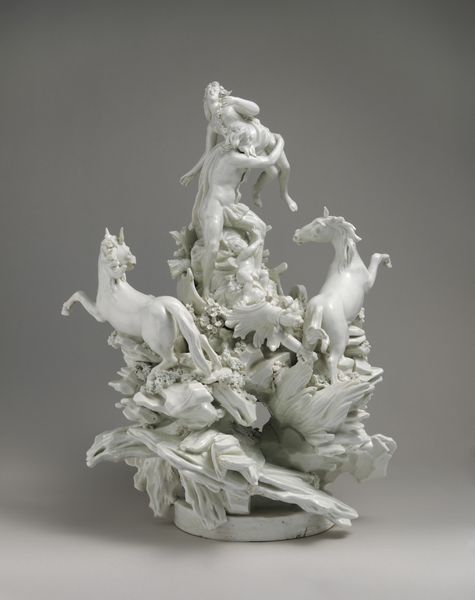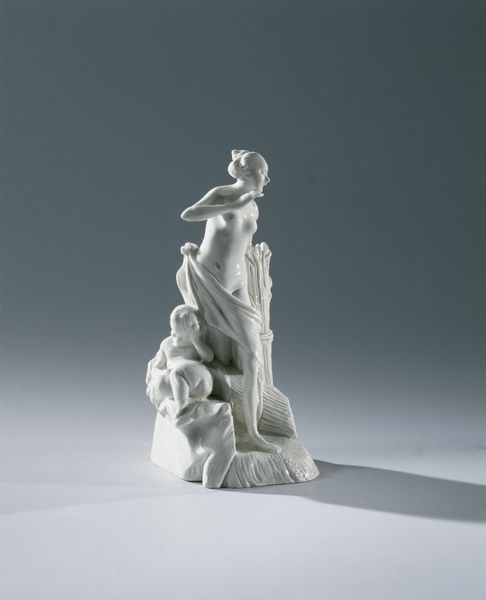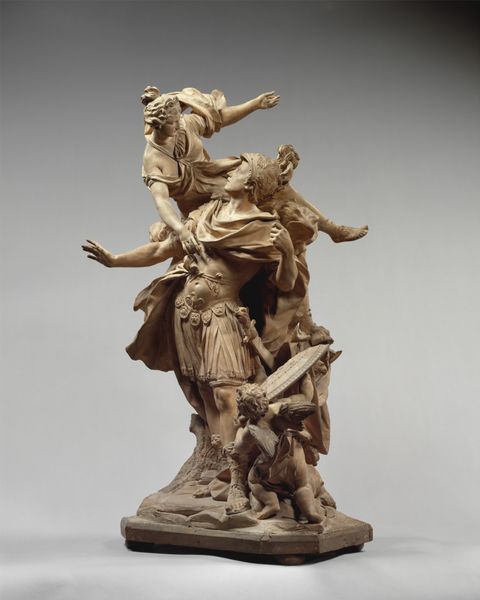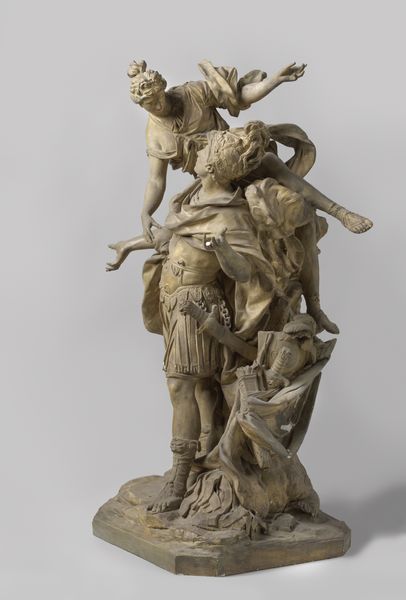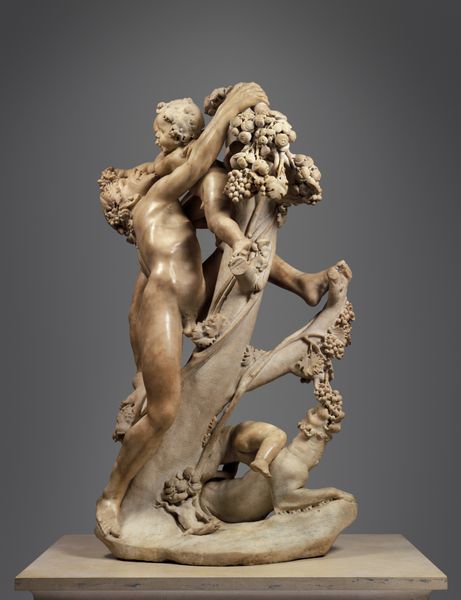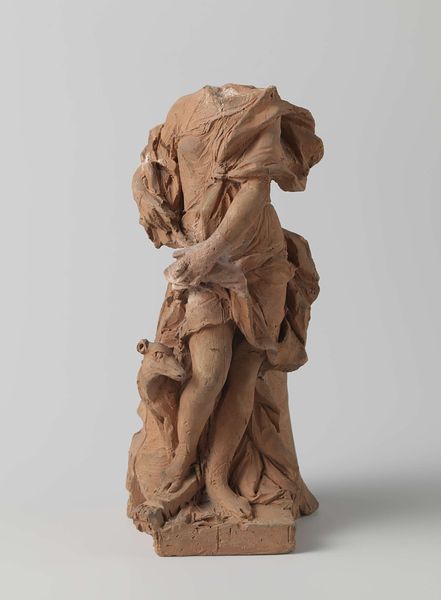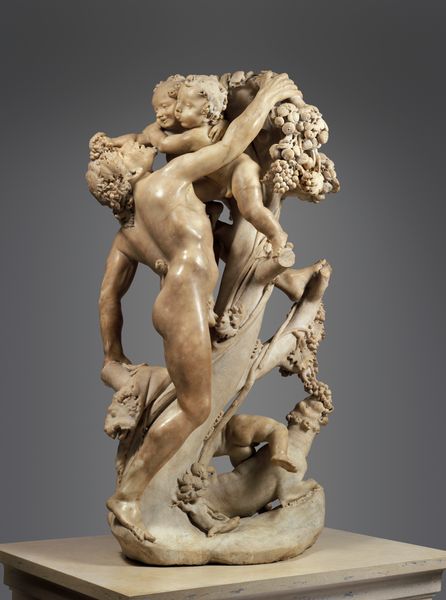
sculpture, marble
#
neoclassicism
#
stone
#
sculpture
#
figuration
#
sculpture
#
history-painting
#
academic-art
#
marble
Dimensions: height 132 cm, diameter 67 cm, circumference 210.4 cm, weight 432 kg
Copyright: Rijks Museum: Open Domain
Editor: Henri Teixeira de Mattos's "The Flood," crafted around 1885 in marble, powerfully captures a moment of chaos. Its dynamic composition is overwhelming and emotionally intense. What narratives or historical contexts do you think informed its creation? Curator: This sculpture demands we consider the socio-political anxieties of its time. The late 19th century was marked by rapid industrialization, urbanization, and shifting social structures. Catastrophic events, like floods, can be interpreted as metaphors for the anxieties about societal collapse, revealing power structures and vulnerabilities within a community. Who benefits, and who suffers the most? Editor: That makes sense. The figures struggling in the water clearly reflect the disproportionate impact of disaster. It also reminds me of classic biblical flood narratives. Curator: Precisely. Biblical narratives often serve as cautionary tales. Think about how this artist chose to depict the figures - their idealized bodies and dramatic poses. How does this aesthetic choice play into the narrative being presented? Does it evoke a sense of heroism amidst tragedy, or does it perhaps gloss over the true, gritty reality of such events? Editor: I hadn't considered the idealization as a potential distancing technique. It does seem to almost romanticize the suffering, which feels… complicated. Curator: It's a tension inherent in academic art. Reflect on what purpose "history painting" served at this moment. The artistic style might be communicating certain political ideals or moral lessons. By examining this piece, perhaps we can see how even in art that aims to depict historical or mythical events, we're truly seeing a reflection of the society that produced it. Editor: I see that so clearly now. It's about more than just the flood; it is speaking about that era's particular ideas about virtue, history, and society itself. Curator: Exactly. And by understanding those values, we gain a richer perspective on the sculpture, and more importantly, the time and social context it reflects.
Comments
No comments
Be the first to comment and join the conversation on the ultimate creative platform.
